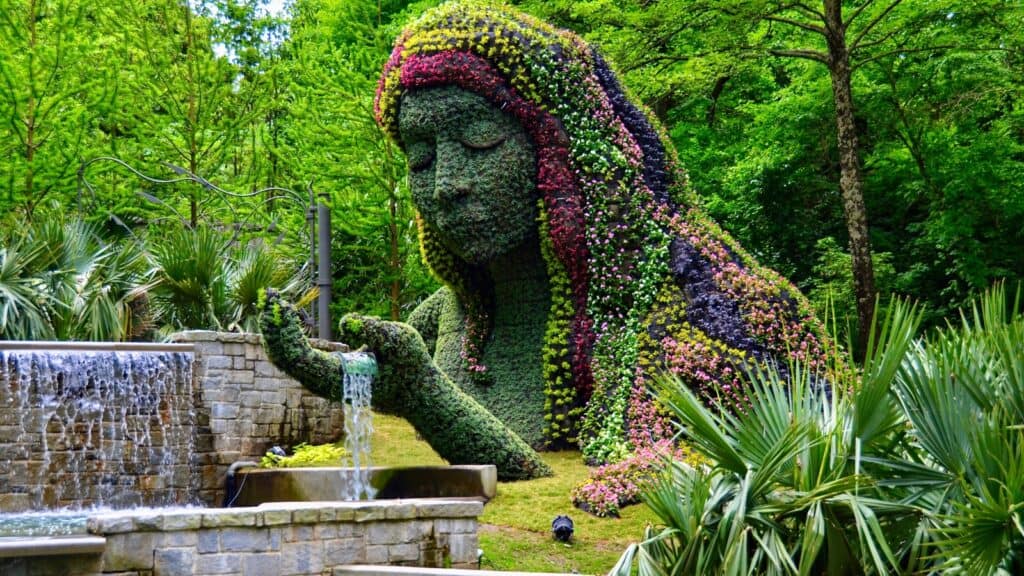Get Your Light Right For Great Indoor Plants
When it comes to caring for indoor plants, one of the most crucial factors is providing the right amount of light. Different plants have varying light requirements, and understanding these needs is essential for their health and growth. In this article, we’ll explore common light-related terms used for indoor plants, provide examples of plants for each category, and discuss indoor lighting options to help your green friends thrive.
Light Terminology for Indoor Plants

Knowing what the various light amount terms mean is the first step.
Full Sun

Plants that require full sun need at least 6 hours of direct sunlight per day. These plants typically originate from environments with intense light exposure, such as deserts or tropical regions. While it can be challenging to provide full sun conditions indoors, south-facing windows often offer the best opportunity for these light-loving plants.
Examples of full sun indoor plants include:
- Succulents (e.g., Echeveria, Sedum)
- Cacti
- Fiddle Leaf Fig (Ficus lyrata)
- Bird of Paradise (Strelitzia nicolai)
Partial Sun / Partial Shade

These terms are often used interchangeably and refer to plants that need 3-6 hours of direct sunlight per day. Partial sun/shade plants can tolerate some direct light but may prefer protection from intense afternoon sun. East or west-facing windows are typically ideal for these plants.
Examples of partial sun/shade indoor plants include:
- Monstera deliciosa
- Pothos (Epipremnum aureum)
- Philodendron
- Spider Plant (Chlorophytum comosum)
Low Light

Low light plants can thrive in areas with minimal natural light, such as north-facing windows or rooms with limited sun exposure. These plants typically require less than 3 hours of direct sunlight or can survive on bright indirect light alone.
Examples of low light indoor plants include:
- Snake Plant (Sansevieria)
- ZZ Plant (Zamioculcas zamiifolia)
- Chinese Evergreen (Aglaonema)
- Peace Lily (Spathiphyllum)
Understanding Indoor Light Conditions

When assessing the light conditions in your home, consider the following factors:
Window Orientation

- South-facing windows: Provide the most light and are ideal for full sun plants.
- East-facing windows: Offer morning sun and are suitable for partial sun/shade plants.
- West-facing windows: Provide afternoon sun and work well for partial sun/shade plants.
- North-facing windows: Offer the least amount of light and are best for low light plants.
Filtered Light

Filtered light occurs when direct sunlight is diffused through curtains, blinds, or nearby trees. This can create ideal conditions for plants that prefer bright, indirect light.
Indirect Light

Indirect light refers to areas that are bright but don’t receive direct sunlight. This can be achieved by placing plants near, but not directly in front of, windows or in well-lit rooms without direct sun exposure.
Indoor Lighting Options for Plants

When natural light is insufficient, artificial lighting can help supplement or even replace sunlight for indoor plants. Here are some popular options:
LED Grow Lights

LED grow lights have become increasingly popular for indoor plant enthusiasts. They offer several advantages:
- Energy efficiency
- Low heat emission
- Customizable light spectrums
- Long lifespan
Many LED grow lights are designed to provide the specific wavelengths of light that plants need for photosynthesis, focusing on red and blue light. Some models also include white light to create a more natural appearance.
Fluorescent Lights

Fluorescent lights are another common choice for indoor plant lighting. They come in two main forms:
- Tube lights: Ideal for larger plant setups or growing shelves.
- Compact Fluorescent Lamps (CFLs): These screw into regular light sockets and are versatile for various fixtures.
Fluorescent lights are cool-running, allowing them to be placed close to plants without causing heat damage. They’re particularly high in blue wavelengths, which is excellent for foliage growth.
Incandescent Lights

While less efficient than LEDs or fluorescents, incandescent bulbs can be used to supplement other light sources. They produce more red wavelengths, which can encourage blooming in some plants. However, they generate more heat, so they should be placed farther from plants to avoid leaf burn.
Halogen Lights

Halogen lights provide full-spectrum light but, like incandescent bulbs, generate significant heat. They’re less commonly used for indoor plants due to their energy inefficiency and heat output.
Creating an Effective Indoor Lighting Setup

To create an optimal lighting environment for your indoor plants, consider the following tips:
- Combine different light sources: Use a mix of natural and artificial light to provide a full spectrum of wavelengths.
- Use timers: Set your artificial lights on timers to ensure consistent light exposure, typically 12-16 hours per day for most plants.
- Adjust distance: Place lights closer to low-light plants and farther from sun-loving varieties to mimic their natural light preferences.
- Rotate plants: Regularly turn your plants to ensure even light exposure on all sides.
- Use reflective surfaces: Mirrors or reflective materials can help bounce light back to plants, increasing overall light exposure.
Monitoring Plant Health

As you experiment with different lighting setups, pay close attention to your plants’ health. Signs of inadequate light include:
- Leggy or stretched growth
- Pale or yellowing leaves
- Slow growth or no new growth
- Leaf drop
- Conversely, signs of too much light can include:
- Scorched or brown leaf edges
- Wilting despite adequate watering
- Faded or bleached leaves
By observing these signs and adjusting your lighting accordingly, you can create the ideal environment for your indoor plants to thrive.
Conclusion

Understanding light requirements and terminology is crucial for successful indoor plant care. By matching plants to appropriate light conditions and supplementing with artificial lighting, when necessary, you can create a thriving indoor garden in any space. Remember that each plant is unique, and it may take some experimentation to find the perfect balance of light for your green companions.
The Most Foolproof Indoor Plants for People Who Struggle to Keep Plants Alive

Bringing greenery into your home can have a transformative effect on your living space, adding life, color, and even improving air quality. However, for many people, keeping houseplants alive can be a daunting challenge. If you’ve ever felt like you have a “black thumb,” you’re not alone. Fortunately, there are several indoor plants that are incredibly resilient and low-maintenance, making them perfect for those who have struggled with plant care in the past. This article will explore the most foolproof indoor plants that can thrive even with minimal attention, ensuring that everyone can enjoy the benefits of houseplants, regardless of their gardening experience.
READ: The Most Foolproof Indoor Plants for People Who Struggle to Keep Plants Alive
Plan a Trip to the Top Botanical Gardens in the U.S.! An Unforgettable Journey Through America’s Finest Flora

Visiting botanical gardens is a delightful way to immerse yourself in the beauty of nature, learn about diverse plant species, and find peace in meticulously designed landscapes. The United States boasts some of the most impressive botanical gardens, each offering unique experiences and horticultural wonders. In this guide, we will explore the best botanical gardens across the country, highlighting their distinctive features and must-see attractions.
Join Us

Join us on this empowering journey as we explore, celebrate, and elevate “her story.” The Queen Zone is not just a platform; it’s a community where women from all walks of life can come together, share their experiences, and inspire one another. Welcome to a space where the female experience takes center stage. Sign up for our newsletter so you don’t miss a thing, Queen!







